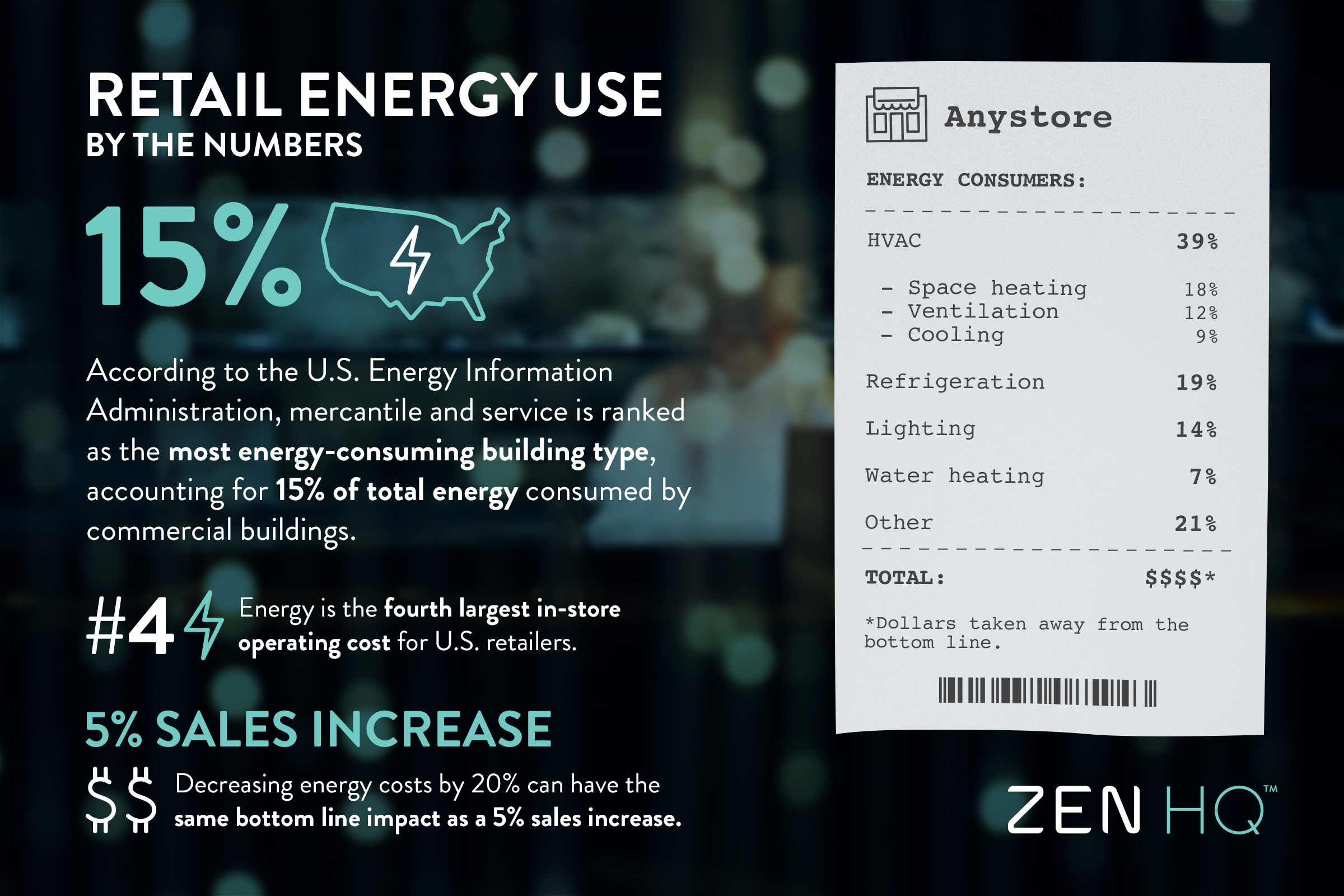Big box retailers spend a lot of time worrying about energy. They almost invariably have Energy Managers or Directors responsible for helping them to negotiate for and procure energy, as well as managing their sustainability and energy efficiency goals. For years big box retailers have recognized that solid energy management policies can help them seek out additional profit in increasingly competitive landscapes and that solid strategies for buying, managing, and even generating their energy is instrumental to their continued success.
Companies like Kohl’s, the Wisconsin-based retailer who was recently honored with the 2018 Energy Star Partner of the Year award, has aggressive sustainability goals that see it working closely with Energy Star to certify that its buildings meet rigorous energy efficiency standards. Kohl’s employs the Energy Star rating system to help guide their energy reduction and efficiency practices; according to Kohl’s reported numbers, 88% of their buildings are now Energy Star certified. In order to achieve certification, buildings must have a score of 75 or greater, which indicates that the building is in the top 25% of energy efficiency for retail stores in the country.
Ikea, the Sweden-based manufacturer and retailer of flat-pack furniture, has committed to 100% renewable energy by 2020 – an aggressive goal which will see it both add new generation facilities like wind and solar but also working towards cutting its energy usage in its stores. This means updating all lighting to energy efficient LED lighting and focusing on recycling its waste.
Nationwide and worldwide retailers like Kohl’s and Ikea and many others with large commercial and environmental footprints have taken not only to implementing sustainability and energy management practices, but also to outfitting their facilities with solar panels to generate electricity for their buildings.
These companies don’t just do it for the feel good, marketing-friendly messages that becoming more sustainable provides them; reducing their demand for utility-provided energy has real economic benefits, including protecting them from energy price shocks, and reducing overall spend on electricity.
But small and mid-box retailers are taking note too and can learn valuable lessons from how larger retailers are using energy management as a source of competitive advantage. Here are a few key lessons to think about:
1. Every building size and type should be thinking about energy management.
If you think energy management doesn’t matter to your business because your buildings aren’t ‘big enough’, think again. According to the Energy Information Administration’s Commercial Building Energy Consumption Survey, buildings that are less than 5,000 square feet use on average 17.4 kWh of energy per square foot – which is more electricity per square foot than any other building size except those buildings greater than 500,000 square feet! Smaller buildings can be remarkably inefficient; this provides ample opportunity for small-footprint business owners and managers to make major impact on energy costs by keeping efficiency at the forefront of thinking.
2. You don’t need an energy manager to make an energy impact.
There are lots of ways to think about reducing energy use in your facilities that don’t require a full-time employee to implement. In fact, our guide to getting employees involved in evaluating and reducing your energy usage is a handy way to get started. Think you don’t have the time? You’d be surprised how often an employee volunteer can be instrumental in assisting with getting an internal energy grassroots movement started at your business. Don’t wait until there is time or a resource to begin – starting today means energy bill savings and increases to profit tomorrow.
3. Better energy management impacts the bottom line.
Business is more competitive than ever; with online retailers dominating retail marketplaces, being able to run your brick and mortar locations at peak efficiency isn’t just a nice-to-have anymore. Reducing operating costs and mitigating future potential price increases to your major operations expenses is just prudent business. Further, whether your buildings are larger or smaller, energy costs have a major impact on the bottom line. According to the same report by the Energy Information Administration, energy is the fourth largest operating cost in a retail environment. Reducing your energy costs by 20% can have the same bottom-line impact as a 5% increase in sales! No matter the size of your buildings, that is an important impact on the health and success of your business.

4. Don’t just reduce – generate!
It may seem like a huge step to contemplate, but generating your own energy is something to seriously consider. Adding a generation facility like solar power to your owned facilities is not just for very large businesses. Solar and wind power companies can help simplify installation and maintain renewable energy generation. They provide creative financing options, turnkey installation and long-term maintenance plans, all while you reap the benefits of locking in a portion of the cost of your energy pricing rather than subjecting yourself to every-changing commercial rates.
Battery systems are also becoming increasingly popular and easily integrated options. With increasingly prevalent smart meters and time-of-use pricing, a battery system installed at your store allows you to better manage your electricity spend by charging and storing energy prices that are inexpensive and discharging when prices are higher. Sound complicated? It can be, but battery storage companies provide a simple-to-use package that includes hardware, installation, and software necessary to get going.
5. Corporate social responsibility is good for the bottom line.
Committing to reducing business energy use, and therefore carbon footprint, is not a small endeavor – but what do customers and employees think? According to a Nielsen survey, 55% of survey respondents would pay more money for a product or service from a company committed to social and environmental causes, and that number has been steadily rising. Consumers continue to evolve to want to do business with those firms that best align with their personal values, and as interest and understanding of the importance of energy efficiency grows, so does consumer willingness to spend their money thoughtfully. Further, according to a Net Impact survey, 35% of students coming into the workforce would be willing to take a 15% pay cut to work for a company with a commitment to corporate social responsibility. Today’s workers also want to spend their time working for company’s that care about the causes that they care about. So, while committing to energy efficiency can result in an immediate impact to energy bills and carbon footprint, it can also be a tool to leverage for customer and employee engagement.
The big box retailers already know the importance of energy efficiency in their businesses. But the reasons to incorporate energy management diligence into daily procedures and practices apply equivalently to smaller sized business as well. Getting started doesn’t need to be overwhelming. One step at a time, your business can chip away energy waste and costs. Interested in getting started? Energy Star offers an excellent toolkit for benchmarking your energy usage and evaluating your potential to save. Don’t wait!






